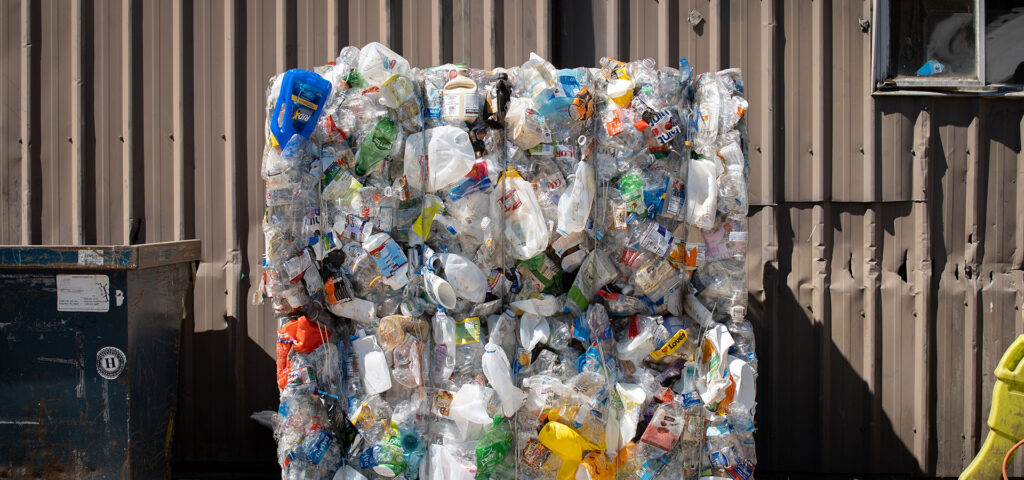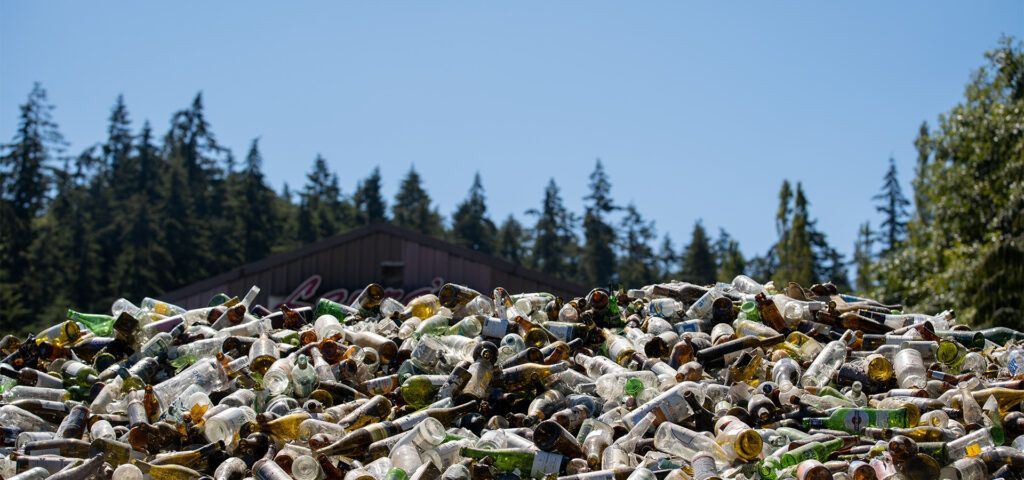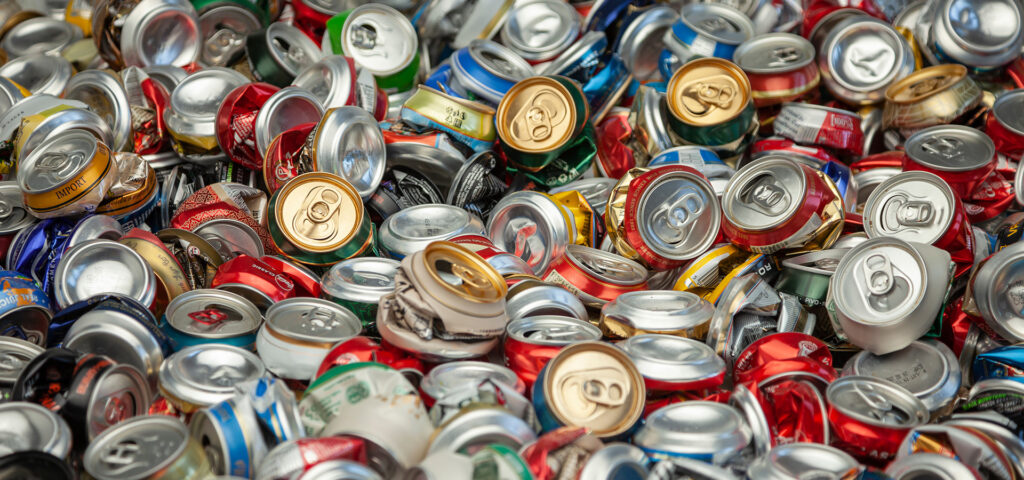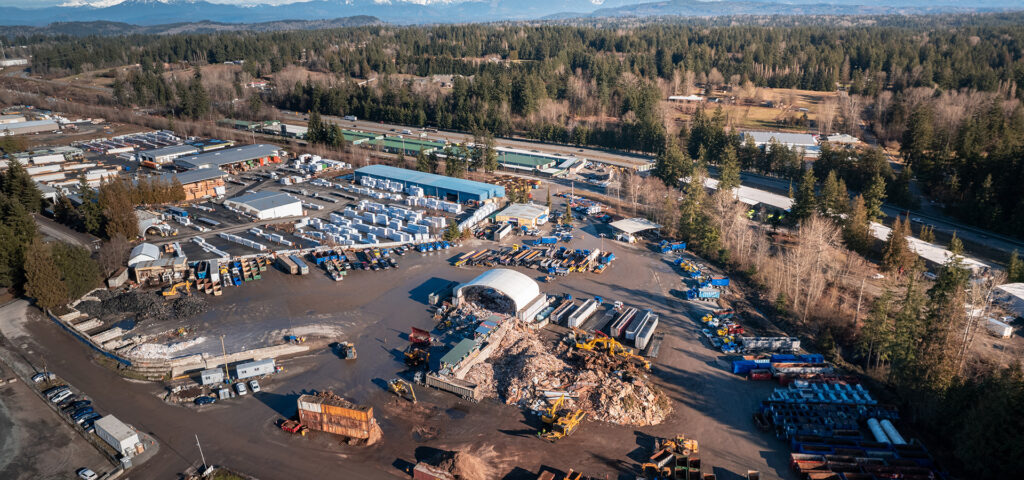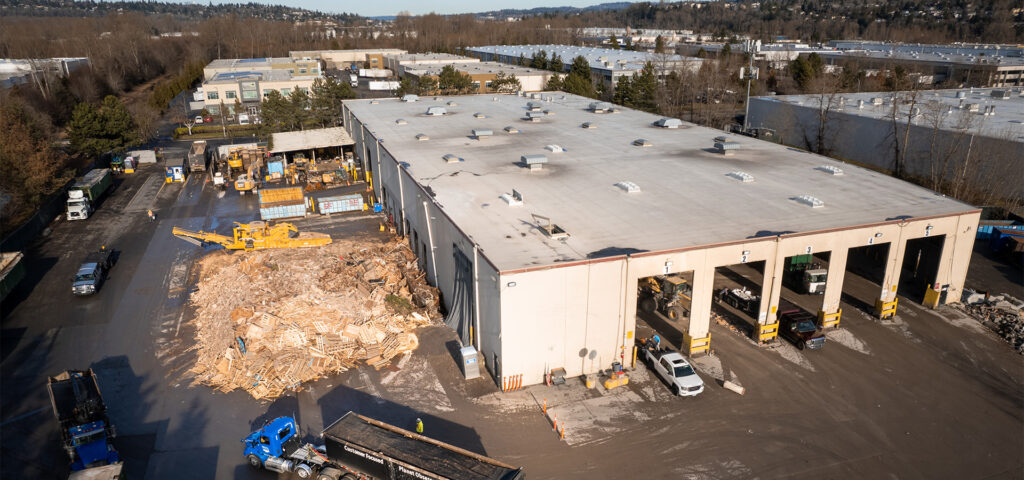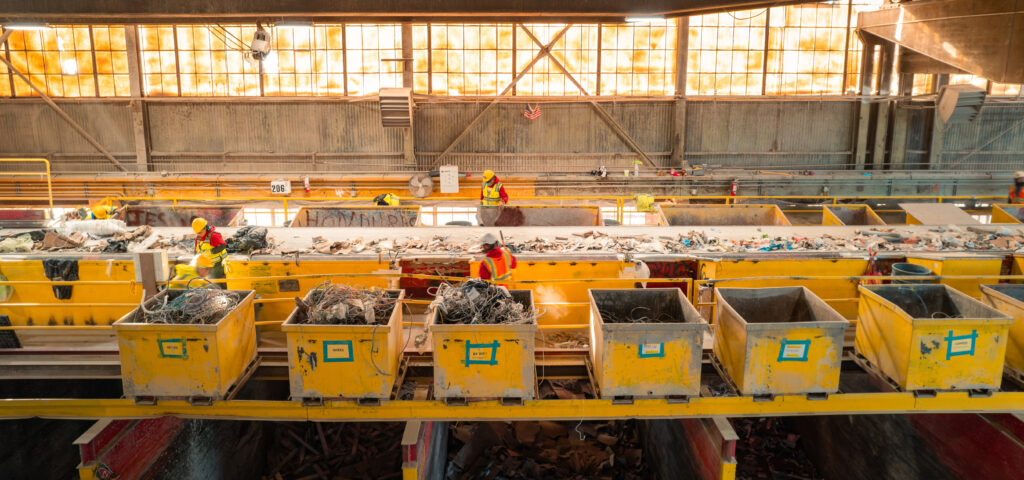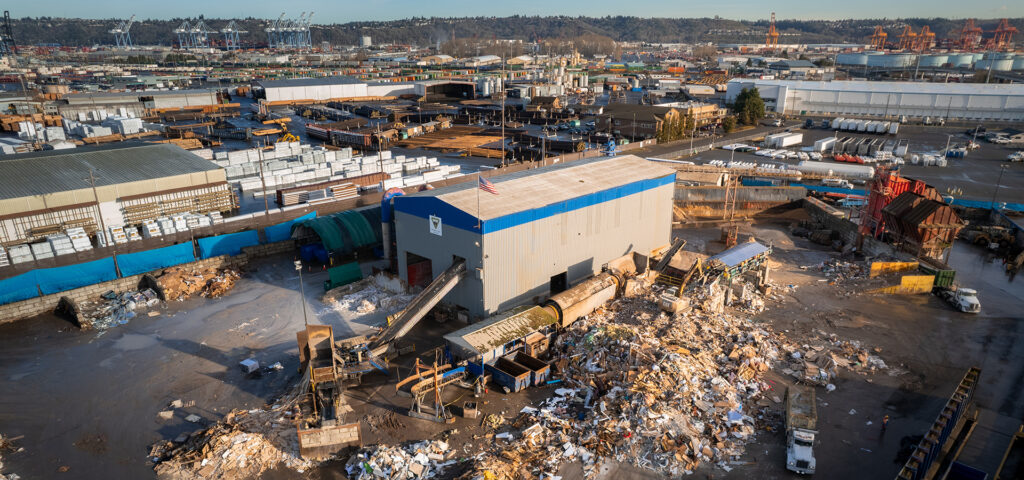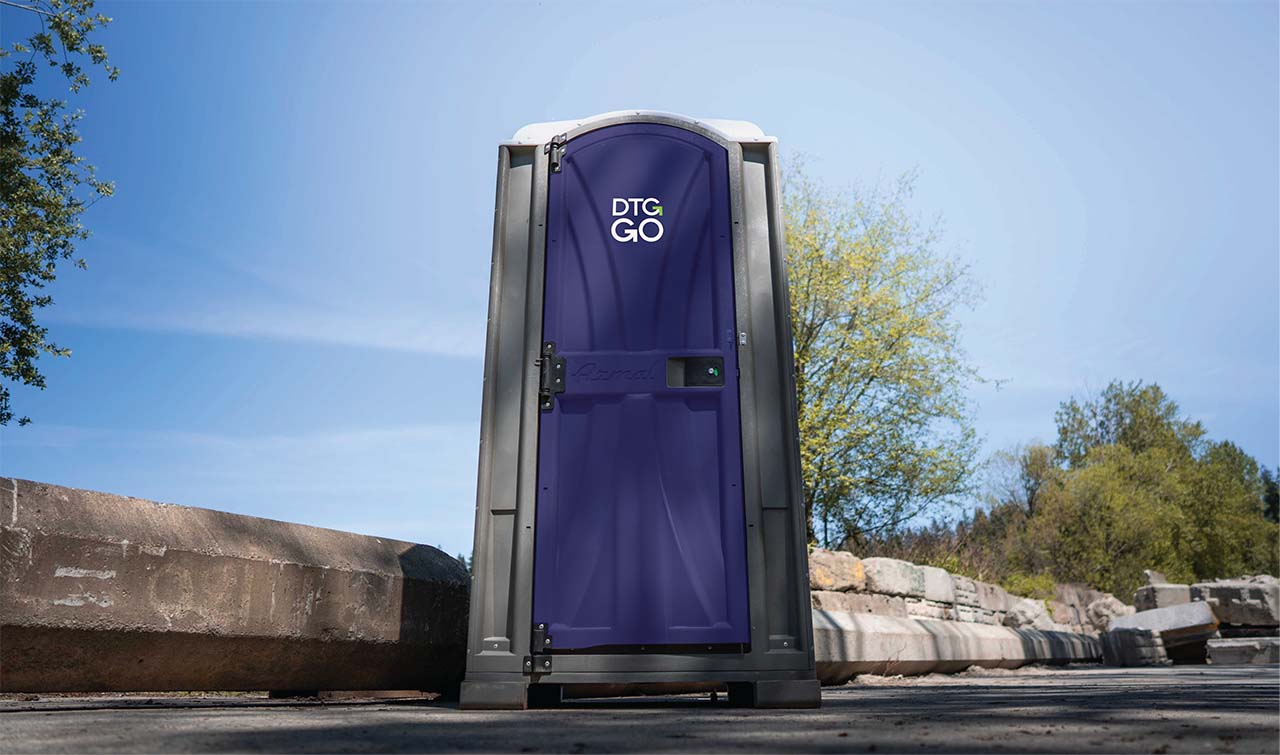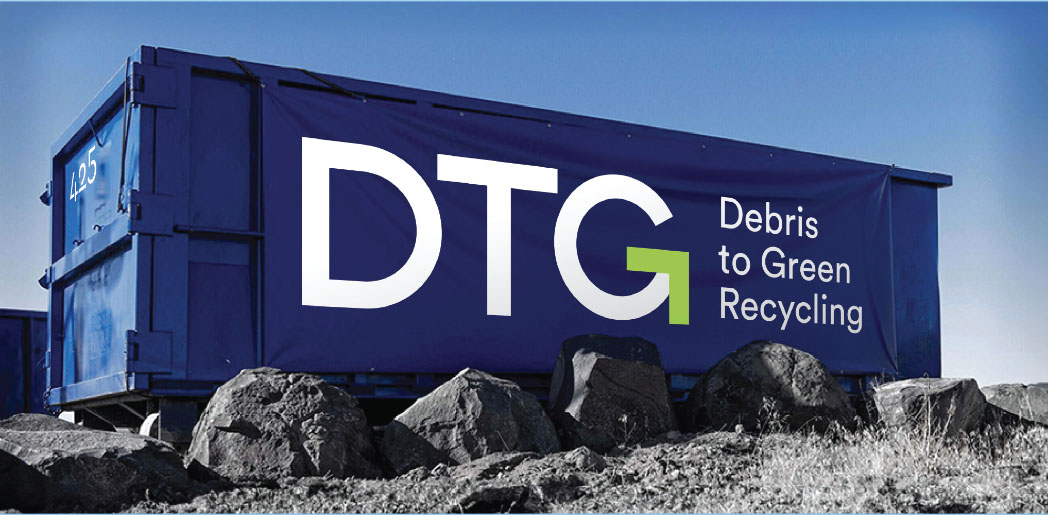PLASTIC RECYCLING CENTER
Recycle Your Used Plastic Products Today & Reduce Pollution
At DTG Recycle, we utilize advanced sorting technologies to recognize and efficiently sort materials. DTG Recycle has Plastic Recycling Centers all over Washington State. We accept plastic products that belong from plastic recycling codes #1 and #2. You may also drop off your used plastic products at any of our locations. Contact us for a price quote for plastic recycling.
Since 1999, DTG Recycle has been providing unparalleled plastic recycling services. We have recycled over 595 tons of plastic from January 2023 through June 2023. Whether you want to dispose of water bottles or laundry detergent containers, we have you covered.
Let’s find out which plastic can and cannot be recycled, how to dispose of it, and its recycling process.
HOW TO PREPARE PLASTIC FOR RECYCLING?
- Before recycling your plastic bags, ensure that you remove any contaminants such as stickers, crumbs, or receipts.
- To make collecting plastic bags easier, keep a dedicated bin in your house, such as a large garbage bag that can hold 50 to 100 bags since they compact well.
- Ensure that the bags you recycle have a #2 or #4 plastic recycling symbols on them to make it easier for the recycling center to sort them out.
HOW TO DISPOSE OF PLASTIC FOR RECYCLING?
You have different options when it comes to plastic disposal. Don’t just dump your plastic. You can contact your local recycling center to arrange for a pickup. They will get your plastic. Alternatively, you can drop-off your plastic to the recycling center.
WHAT PLASTIC CAN BE RECYCLED?
Many types of plastic can be recycled, but the specific types that are accepted for recycling may vary depending on the recycling program or facility. The most commonly recycled plastics include the following.
- Polyethylene Terephthalate (PET or PETE) – This plastic is used in bottles for beverages, food, and personal care products.
- High-Density Polyethylene (HDPE) – This plastic is used in milk jugs, detergent bottles, and some shopping bags.
- Polyvinyl Chloride (PVC) – This plastic is used in pipes, vinyl flooring, and some packaging.
- Low-Density Polyethylene (LDPE) – This plastic is used in some plastic bags, shrink wrap, and squeezable bottles.
- Polypropylene (PP) – This plastic is used in yogurt containers, straws, and some food packaging.
- Polystyrene (PS) – This type of plastic is used in foam packaging, disposable cups, and some food containers.
WHICH PLASTIC CANNOT BE RECYCLED?
Not all types of plastic can be recycled. Generally, plastics that are labeled with a recycling symbol and a number between 1 and 7 are considered recyclable, but there are some exceptions. Listed below are some examples of plastics that cannot be recycled.
- Biodegradable Plastics – While biodegradable plastics seem like a good alternative to traditional plastics, they are not always recyclable. They contaminate the recycling stream if they’re mistakenly included with other plastics. They do not break down properly in landfills or composting facilities.
- Mixed Plastics – Plastics that are made up of multiple layers of different types of plastic, like some food packaging, cannot be easily recycled because the layers cannot be separated.
HOW IS PLASTIC RECYCLED?
Now that you have acquired a better understanding of plastic recycling, it is natural to be curious about the process itself. In this guide, we will discuss the step-by-step process involved in recycling plastic, highlighting the various techniques and technologies employed to transform discarded plastic into valuable resources.
1. Collecting Used Plastic
Collecting used plastic for recycling is an important step in reducing the amount of plastics that end up in the landfills and the environment. Plastic recycling companies collect plastic for recycling through various methods, including:
- Collection centers – Plastic recycling companies may operate collection centers where individuals and businesses can drop off their plastic. These collection centers are typically located in urban or suburban areas for easy access.
- Curbside pickup – Some recycling companies partner with local governments to offer curbside pickup of plastic. Residents can place their plastic in designated recycling bins and leave them at the curb for pickup on designated days.
- Partnerships with businesses – Recycling companies may also partner with businesses that generate large amounts of plastic, such as supermarkets, restaurants, and manufacturers. The recycling company may provide collection bins or pickup services for the business’s plastic.
2. Sorting
It is important to sort plastic before recycling because different types of plastic have different properties and require different recycling processes. Sorting plastic helps ensure that the plastic can be processed efficiently and effectively to create new products. Some of the sorting techniques include:
- Manual picking – This is a process in which workers manually sort through plastic to remove contaminants and sort plastic by type before it is processed for recycling.
- Optic sorting machine – This uses sensors and cameras to identify and sort plastic by type. This technique is highly accurate and effective at removing contaminants, but it is also more expensive than other sorting techniques.
- Trommels – This involves using a rotating cylindrical screen, called a trommel, to separate different types of plastic by size. The trommel is perforated with small holes that allow smaller pieces of plastic to pass through, while larger pieces are retained and sorted.
- OCC screening – OCC (Old Corrugated Containers) screening is a technique used for sorting plastic for recycling. It is typically used to remove contaminants, such as paper, cardboard, and other non-plastic materials, from the plastic stream.
- Ballistic separator – This process involves passing the plastic through a rotating drum that contains a series of paddles or balls. As the drum rotates, the plastic is lifted and dropped by the paddles, causing the lighter materials, such as film and paper, to be separated from the heavier materials, such as rigid plastics and metals.
- Magnet separator – This uses magnets to separate ferrous and non-ferrous metals from plastic. This process is commonly used in combination with other sorting techniques to remove metal contaminants from the plastic.
- Eddy currents separator – This is a non-ferrous metal sorting process that uses a magnetic field to separate non-ferrous metals, such as aluminum and copper, from plastic.
- Sink-float separator – This process involves adding the plastic to a tank filled with a liquid of a specific density, such as water or air, which causes the plastic materials to float or sink depending on their density.
3. Reprocessing
Reprocessing is a critical step in the plastic recycling process. It involves processing the collected and sorted plastic materials into a form that can be used to create new products.
4. Secondary Sorting for Quality Control
Secondary sorting involves a thorough inspection of the sorted plastic materials to identify any remaining contaminants, such as small pieces of paper or other non-plastic materials. The sorted plastic materials may also be tested for purity and quality to ensure that they meet the required specifications for use in manufacturing.
5. Washing
Washing is an essential step in the plastic recycling process that removes any remaining contaminants, such as dirt, labels, or food residue, from the sorted plastic materials. The washing process also helps to improve the quality of the recycled plastic materials and makes them suitable for use in manufacturing new products.
6. Shredding and Resizing
These processes involve breaking down the plastic materials into smaller pieces or granules, which makes them easier to handle and process. In the shredding process, the plastic is fed into a machine that cuts it into small pieces or strips. The shredding process helps to reduce the volume of the plastic, making it easier to transport and store. The resizing process involves melting the plastic and extruding it through a small opening to create long strands.
7. Extruding or Melting
Melting is the process of heating the plastic to a high temperature until it becomes a liquid. The melted plastic is then molded or shaped into new products using various techniques, such as injection molding or blow molding. The extruded plastic can also be cooled and cut into smaller pieces or pellets for further processing.
WHAT ARE THE DIFFERENT METHODS OF PLASTIC RECYCLING?
Listed below are the methods of plastic recycling.
- Mechanical recycling – This is the most common type of plastic recycling, which involves sorting, cleaning, and shredding the plastic into small pieces. They are then melted and processed into new products. Mechanical recycling can be done repeatedly without significant degradation of the plastic quality.
- Chemical recycling – This process involves breaking down plastic into its constituent chemicals, which can then be used to create new products or feedstocks for other chemical processes. Chemical recycling is still in the early stages of development but has the potential to recycle plastics that are difficult to recycle mechanically.
WHAT DO PLASTIC RECYCLING CODES MEAN?
Plastic recycling codes are a set of numbers and symbols that are used to identify the type of plastic material used in a product. The plastic recycling numbers help consumers to identify which plastics can be recycled and how they should be recycled. The recycling codes for plastic range from 1 to 7. Each number represents a different type of plastic.
- The recycling code for Polyethylene Terephthalate (PET) is number 1. An example of what PET bottles can be recycled into is new PET bottles.
- The recycling code for High-Density Polyethylene (HDPE) is number 2. An example of what HDPE plastic, such as detergent bottles, can be recycled into is drainage pipes.
- The recycling code for Polyvinyl Chloride (PVC) is number 3. An example of what PVC plastic, such as vinyl flooring, can be recycled into is garden hoses.
- The recycling code for Low-Density Polyethylene (LDPE) is number 4. An example of what LDPE plastic, such as plastic bags, can be recycled into is new plastic bags.
- The recycling code for Polypropylene (PP) is number 5. An example of what PP plastic, such as straws, can be recycled into is food packaging.
- The recycling code for Polystyrene (PS) is number 6. An example of what PS plastic, such as disposable cups, can be recycled into is foam insulation.
- The recycling code for other plastics is number 7.
All of the above plastics can be disposed of in recycling bins and the recycling facility will separate them.
WHY RECYCLE PLASTIC?
Here are the reasons to recycle plastic.
- Conserves energy
- Reduces demand for raw materials
- Reduces fossil fuel consumption
- Reduces CO2 emission
- Lessens landfill use
- Promotes a sustainable lifestyle
STATISTICS ON PLASTIC RECYCLING
9% OF PLASTIC WAS RECYCLED
The Organization for Economic Co-operation and Development (OECD) reports that a mere 9% of plastic was recycled, while 19% was incinerated and nearly 50% was sent to sanitary landfills. The remaining 22% was disposed of in unregulated dumpsites, burned in exposed pits, or released into the environment. 1
MORE THAN 595 TONS OF PLASTIC RECYCLED BY DTG RECYCLE BETWEEN JAN AND JUNE 2023
595 tons of plastic is enough to provide energy for every DTG hook truck drivers home for a year.
RECYCLE YOUR PLASTIC DEBRIS NOW TO REDUCE THE FOLLOWING…
- Between 2000 and 2019, the world’s plastics manufacturing increased by double to 460 million tons. About 3.4% of the planet’s greenhouse gas emissions come from plastic. 1
- In 2019, 1.7 Mt of plastic leaked into oceans, 109 Mt has accumulated in rivers, and an estimated of 30 Mt flowed in seas. 1
References
1 Plastic pollution is growing relentlessly as recycling fall short, says OECD. Retrieved June 19, 2023, from https://www.oecd.org/
FAQS FOR PLASTIC RECYCLING SERVICE
Where can I recycle plastic?
While most states’ recycling centers and curbside pickup programs accept plastic for recycling, it’s advisable to confirm with your local recycling program regarding their specific guidelines for recycling plastic in your area.
Can I make money by recycling plastic?
Yes, you can. To recycle your plastic properly, you should follow these steps. First, determine the type of plastic you have, as there are more than 50 varieties. Remember that there are three main types for recycling: HDPE, PVC, and PET. HDPE are opaque bottles, PVC are clear bottles with a seam at the base, and PET are clear bottles with a hard, molded plastic center at the base. Next, label your bins using a permanent marker for each type of plastic. Then, use the phone book or the internet to locate your local recycling center. Finally, receive payment for your plastic.
How many times can plastic be recycled?
The number of times that plastic can be recycled depends on the type of plastic and the recycling process used. In general, some types of plastic can be recycled more times than others. For example, polyethylene terephthalate (PET) plastic, which is commonly used for water and soda bottles, can be recycled multiple times. However, each time it is recycled, the quality of the plastic decreases. It eventually becomes unusable for certain products. On the other hand, plastics like polyvinyl chloride (PVC) and polystyrene (PS) are more difficult to recycle and cannot be recycled multiple times.
Can plastic pollution be solved through recycling?
Recycling is an important tool in the fight against plastic pollution, but it is not a complete solution on its own. While recycling can help to reduce the amount of plastic that ends up in landfills and the environment, it is not enough to fully address the problem of plastic pollution. There are several reasons for this.
- Limited recycling infrastructure – Recycling infrastructure is not always available or accessible in all areas. This can limit the amount of plastic that can be recycled.
- Contamination – Contamination of plastic can reduce the quality of recycled plastic and make it less valuable. This can limit the economic feasibility of recycling.
- Limited recyclability – Not all types of plastic are recyclable, and some types of plastic are difficult or expensive to recycle.
- Continued plastic production – Even with increased recycling efforts, the continued production of new plastic can contribute to plastic pollution, as not all plastic can be recycled and some plastic products still end up in the environment.
Is knowing the plastic recycling codes important?
Yes, by understanding these codes, one can make informed decisions about which plastics to recycle and how to recycle them properly. This can help to reduce contamination and improve the quality of recycled plastic, which in turn can make recycling more economically feasible and environmentally beneficial. In addition to understanding plastic recycling codes, it is also important to check with local recycling programs to determine what types of plastic are accepted in your area, as recycling guidelines can vary by region.
Can plastic bags be recycled?
Yes, plastic bags can be recycled. However, they require a specific recycling process and cannot be recycled through most curbside recycling programs. This is because plastic bags are thin and can easily become tangled in recycling equipment, causing damage and slowing down the recycling process.
Does bag color matter for plastic bag recycling?
The color of plastic bags can sometimes affect their recyclability, but it depends on the type of plastic and the recycling facility’s capabilities. Most plastic bags are made from either high-density polyethylene (HDPE) or low-density polyethylene (LDPE). HDPE bags are typically clear or white, while LDPE bags can be a range of colors. LDPE bags are often used for grocery bags, trash bags, and other household items. While both HDPE and LDPE bags can be recycled, some recycling centers only accept clear or white HDPE plastic bags. This is because darker colors can be more difficult to separate and are not as valuable on the recycling market.
Can plastic straws be recycled?
Plastic straws are typically not accepted in curbside recycling programs and cannot be recycled in most recycling centers. This is because they are small and thin, which makes them difficult to sort and process with recycling equipment. Additionally, plastic straws are often made from polypropylene, which is not widely accepted for recycling compared to other types of plastic.
What products can be made from recycled plastic?
Recycled ocean plastic can be used to create a variety of products, and the possibilities continue to expand as more companies explore this sustainable option. Some common products that are currently being made from recycled ocean plastic include the following.
- Clothing and apparel, such as t-shirts, swimwear, and activewear
- Shoes and footwear
- Bags, backpacks, and luggage
- Phone cases and tech accessories
- Sunglasses and eyewear
- Household items such as kitchenware, furniture, and home decor
- Sporting goods, such as skateboards and surfboards
- Toys and games
- Building materials, such as tiles and flooring
- Automotive parts, such as car bumpers and dashboards
Can plastic water bottles be recycled?
Yes, plastic water bottles can be recycled. Most plastic water bottles are made from polyethylene terephthalate (PET) plastic, which is widely accepted by recycling programs. PET can be recycled into a variety of products, including new plastic bottles, carpeting, clothing, and furniture.
Facilities that accept plastic
- 425-365-4266
-
8624 219th St SE
Woodinville, WA 98072
- (425) 549-9715
-
701 SW 34th St
Renton, WA 98057
- 253-627-1180
-
1805 Stewart Street
Tacoma, WA 98421

